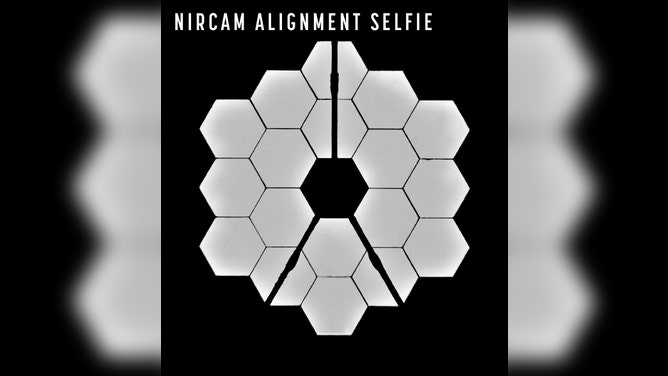'Nailed it': James Webb Space Telescope's first image is something to celebrate
Webb's 18 mirrors are working together showing the universe in beautiful clarity
James Webb Space Telescope sends back first photo
James Webb Space Telescope's mirrors aligned and sent back the first crisp image of a star.
There was a collective sigh of relief from the global astronomy community after James Webb Space Telescope's mirrors aligned and sent back the first crisp image of a star.
After decades of planning, development and many launch delays, NASA team members revealed Wednesday that the most powerful space telescope is working better than scientists had dared to hope.
Following the launch on Christmas morning from French Guiana, the 21-foot telescope mirror slowly unfolded in space as it journeyed 1 million miles from Earth. Then, all 18 golden hexagons had to be aligned down to a nanometer to function as a single primary mirror.
On March 11, the Webb team completed "fine phasing" aligning the Optical Telescope Element. Now it's official: the James Webb Space Telescope can successfully gather light from distant objects in the universe in beautiful clarity.
JAMES WEBB SPACE TELESCOPE'S GIANT GOLDEN MIRROR OPENS, COMPLETING DEPLOYMENT IN SPACE

This new "selfie" was created using a specialized pupil imaging lens inside of the NIRCam instrument that was designed to take images of the primary mirror segments instead of images of the sky. In this image, all of Webb’s 18 primary mirror segments are shown collecting light from the same star in unison. Credits: NASA/STScI
"It was a very emotional moment," Webb Optical Telescope Element Manager Leon Feinberg said when the team gathered to see the first images over the weekend.
As the images of the star came in, the team blew those up to see just how well Webb was performing. Those first images were "absolutely phenomenal," Feinberg said.
"We said last Fall that we would know that the telescope is working properly when we have an image of a star that looks like a star. And now we have that, and you're seeing that image." Feinberg said, revealing the glowing star created by the most powerful telescope ever built.
Fans of the Hubble Space Telescope will remember in 1990, when the first images came back blurry team quickly figured out a problem with the mirror was to blame. Thankfully, Hubble is only about 300 miles above Earth, and astronauts conducted several space shuttle missions to repair the telescope. So when Webb's team received its first image showing a sharp and crisp view of a randomly chosen star, it was a huge weight lifted off the shoulders of all the people who have worked toward this moment.
Thomas Zurbuchen, the associate administrator for NASA’s Science Mission Directorate, said "sleepless nights" are behind him.
The star in the image called 2MASS J17554042+655127 wasn't chosen for any particular reason, explained Jane Rigby, NASA Webb operations scientist. "It was just a nice boring star of about the right brightness," she said.
About a hundred times fainter than the visible than the human eye could see, Rigby said the star is blindingly bright in the Webb image and is a testament to the telescope's sensitivity.
"The engineering images that we saw today are as sharp and as crisp as the images that Hubble can take but are at a wavelength of light that is totally invisible to Hubble," Rigby explained. "So this is making the invisible universe snapping into very, very sharp focus. The requirement was to get to the diffraction limit at two microns. We nailed it."
The image is more than a single star. Rigby said the surrounding streaks are galaxies that are several billion light-years away, which is what the telescope was designed for – to see light as it looked billions of years ago.
